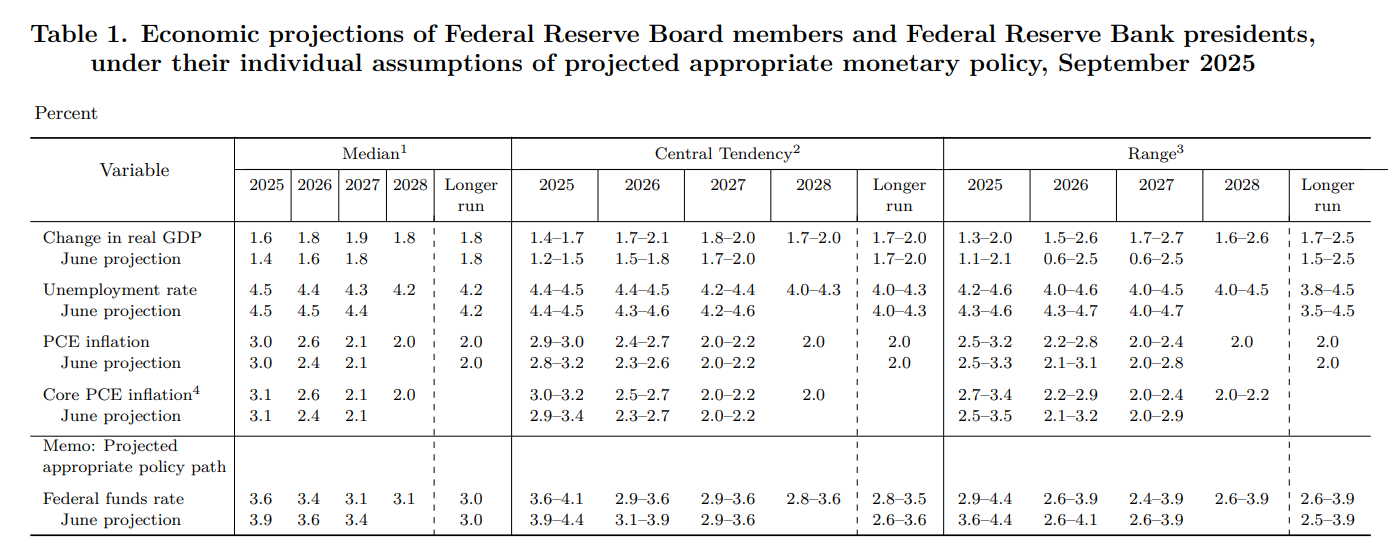GBP/USD spikes toward 1.3700 as Fed cuts rates eyes on Powell presser
- GBP/USD volatile after Fed trims rates; Powell’s press conference next in focus.
- Fed split: Miran dissents, favoring 50-bps cut; statement flags elevated inflation and slower growth.
- SEP projects 50-bps more easing in 2025, reinforcing expectations for prolonged Fed dovish path.
GBP/USD surges during the North American session after the Fed cut rates by 25 basis points as expected, and eyes further rates reductions towards the year end. At the time of writing the pair trades volatile within the 1.3650 – 1.3700 range as traders await Fed Chair Powell press conference.
Sterling rallies after Fed acknowledges labor market risks, SEP projects further 50 bps in cuts by year-end
The Federal Reserve acknowledged growing downside risks to the labor market, noting that while unemployment remains low, it has edged higher. The policy decision was not unanimous, with Governor Stephen Miran voting for a larger 50-basis-point cut in line with some analysts’ expectations.
On inflation, the Fed said price pressures have “moved up” and remain “somewhat elevated,” while economic growth has moderated through the first half of 2025.
The Summary of Economic Projections (SEP) pointed to an additional 50 bps of rate cuts anticipated by year-end.

Fed FAQs
Monetary policy in the US is shaped by the Federal Reserve (Fed). The Fed has two mandates: to achieve price stability and foster full employment. Its primary tool to achieve these goals is by adjusting interest rates. When prices are rising too quickly and inflation is above the Fed’s 2% target, it raises interest rates, increasing borrowing costs throughout the economy. This results in a stronger US Dollar (USD) as it makes the US a more attractive place for international investors to park their money. When inflation falls below 2% or the Unemployment Rate is too high, the Fed may lower interest rates to encourage borrowing, which weighs on the Greenback.
The Federal Reserve (Fed) holds eight policy meetings a year, where the Federal Open Market Committee (FOMC) assesses economic conditions and makes monetary policy decisions. The FOMC is attended by twelve Fed officials – the seven members of the Board of Governors, the president of the Federal Reserve Bank of New York, and four of the remaining eleven regional Reserve Bank presidents, who serve one-year terms on a rotating basis.
In extreme situations, the Federal Reserve may resort to a policy named Quantitative Easing (QE). QE is the process by which the Fed substantially increases the flow of credit in a stuck financial system. It is a non-standard policy measure used during crises or when inflation is extremely low. It was the Fed’s weapon of choice during the Great Financial Crisis in 2008. It involves the Fed printing more Dollars and using them to buy high grade bonds from financial institutions. QE usually weakens the US Dollar.
Quantitative tightening (QT) is the reverse process of QE, whereby the Federal Reserve stops buying bonds from financial institutions and does not reinvest the principal from the bonds it holds maturing, to purchase new bonds. It is usually positive for the value of the US Dollar.

